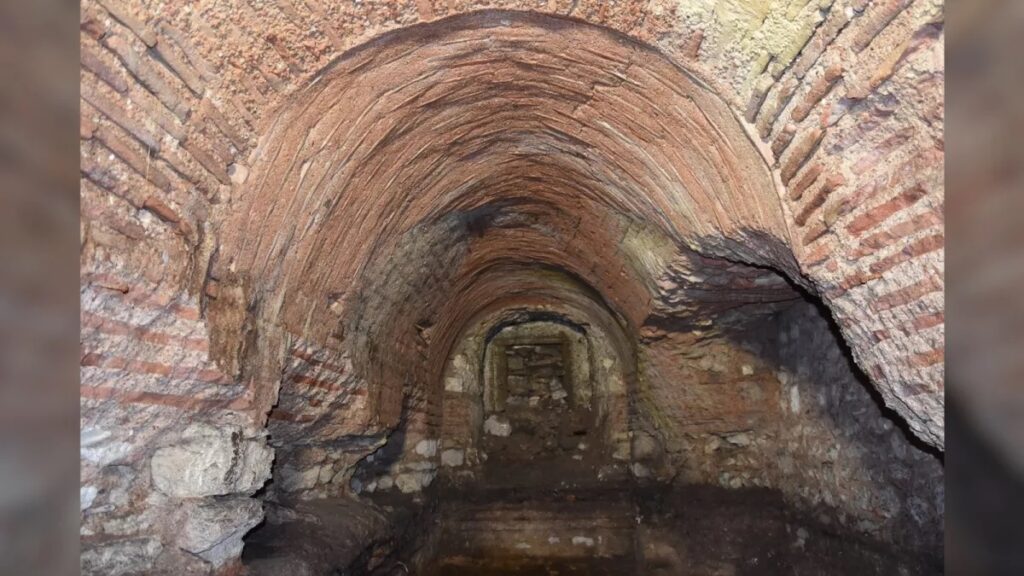Rooms and a tunnel from a 1,500 -years-old Christian church in Istanbul — once called Constantinople and the capital of the Eastern Roman (Byzantine) Empire, were discovered by archaeologists.
Although they have not discovered the purpose of the hidden structures, they are probably part of the vast Church of St. Polyeuctus above them, which was built when the city was the centre of Christianity, the Greek-speaking empire's official religion.
The subterranean features consist of two large chambers connected by a tunnel and seem to have been linked to the church prothesis — the chamber beside the altar where bread and wine were prepared for the Byzantine Christian rite of the Divine Liturgy, a name still used in Eastern Orthodox churches.
According to archaeologists, parts of the underground rooms are still decorated with mosaics, stone inlays, and carved marble blocks.

The underground rooms were first discovered during excavations following road construction in the 1960s. But they were covered up again, and their entrances were backfilled to preserve the rooms, according to Mahir Polat, the deputy general secretary of the Istanbul Metropolitan Municipality (IBB.)
The area, in the Saraçhane district at the center of Istanbul, had since become derelict. But the IBB started a redevelopment of the area last year as part of a project to transform the extensive ruins into a tourist attraction.
In March, workers re-excavated the underground rooms and tunnel, and authorities soon plan to let the public observe the progress, Polat told Live Science in an email.
The purpose of the chambers isn't clear but they seem to have been connected to the altar area of the church above, and were decorated with mosaics and stone inlays.

The Church of St. Polyeuctus was built between A.D. 524 and 527, during the reign of the emperor Justinian, according to "The Oxford Dictionary of Byzantium" (Oxford University Press, 1991).
It was one of the most splendid churches in Constantinople, as well as the largest until the cathedral of Hagia Sophia (now a mosque) was completed in 537.
All that's left now are its ruins, but in its heyday the Church of St. Polyeuctus was ornately decorated and may have boasted an early dome — a design perfected in the Hagia Sophia.
Polat said the church was abandoned after it was badly damaged by an earthquake in the 11th century and finally destroyed during the sack of the city in 1204 by Crusaders, mainly from Western Europe.
According to British historian Jonathan Phillips, author of "The Fourth Crusade and the Sack of Constantinople" (Penguin Books, 2005), the Crusaders had been lured to Constantinople in support of a Byzantine Imperial faction while on their way to liberate Jerusalem.
But they were left empty-handed when their favorite emperor was deposed by an uprising, and they turned instead to looting the imperial city.

Several architectural features of the church were taken and placed on buildings as far away as Barcelona and Vienna, and two of its ornately carved pillars — known as the Pilastri Acritani, or "Pillars of Acre" — are now part of St. Mark's Basilica in Venice.
The church ruins were built over during Istanbul's Ottoman period.
Polat said it was notable that the underground structures had survived so long without being greatly damaged by the region's numerous earthquakes; and this longevity suggests many Byzantine buildings had been designed to withstand them.
Ken Dark, an archaeologist at King's College London who isn't involved in the new project but has conducted excavations in Istanbul, said the ruins of St. Polyeuctus are among the best-documented in the city.
"Hopefully, re-displaying the ruins of this historically important and once-magnificent church will bring awareness of it to a much wider audience," he told Live Science in an email.
READ MORE: Newly discovered Iron Age house in Athens transforms our understanding of Ancient Greece.

